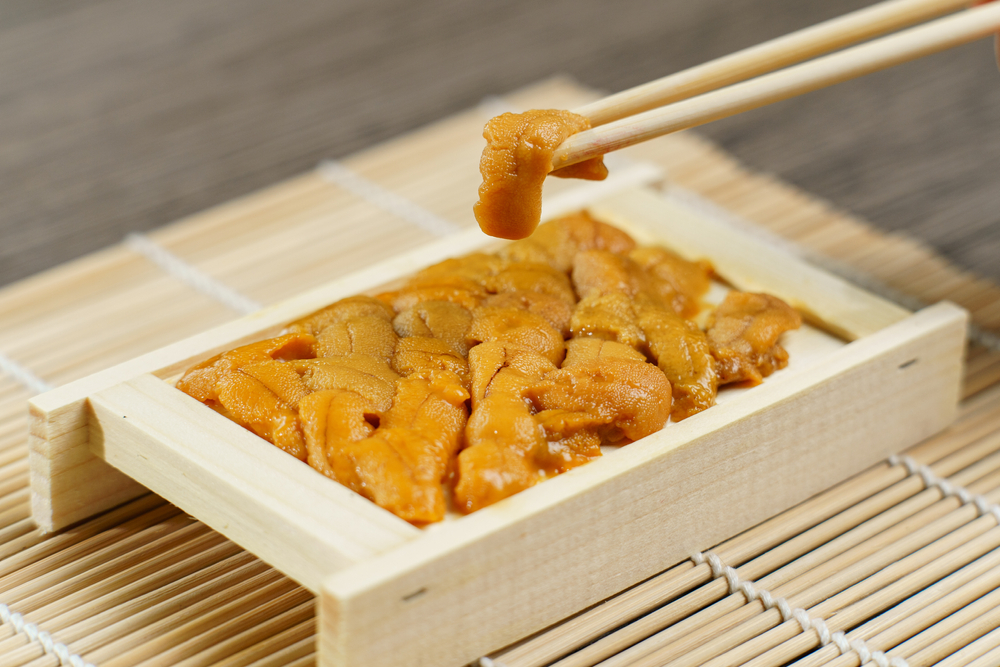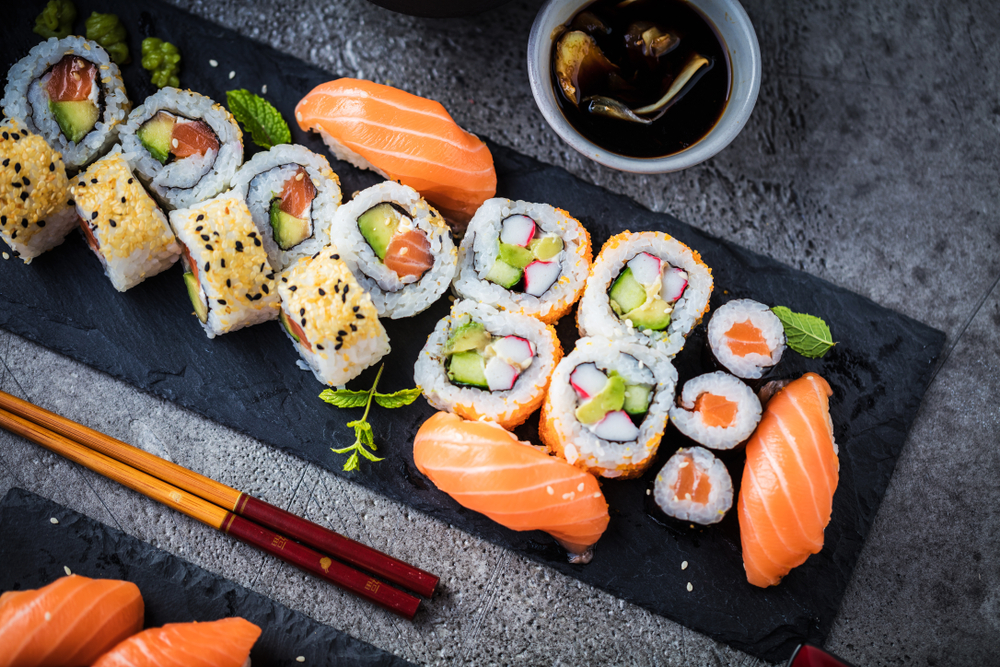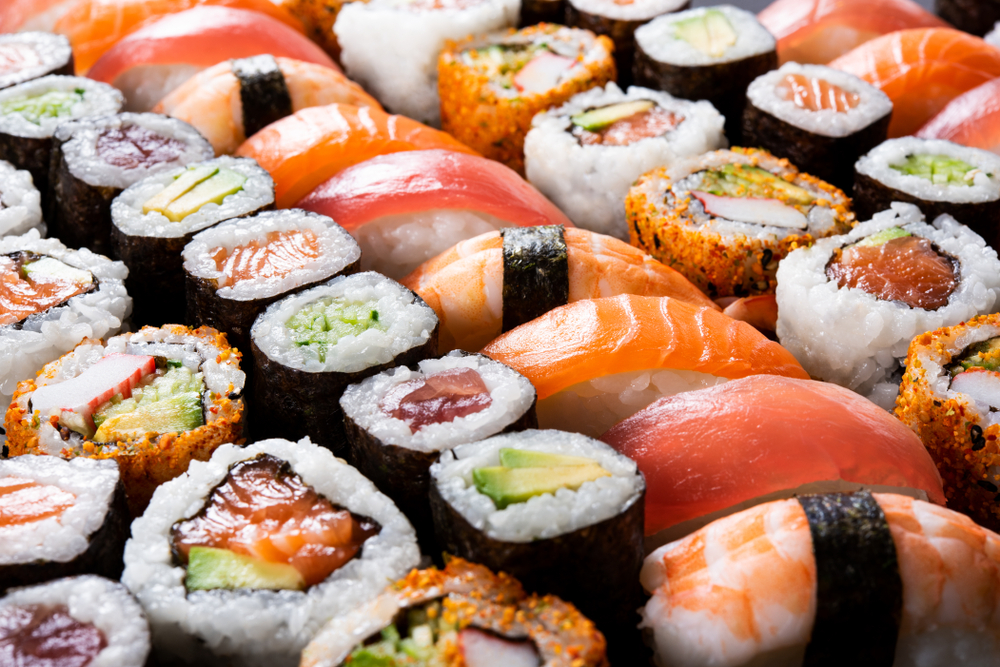Sea urchin, also known as uni, is a delicacy that has been enjoyed in various cuisines for centuries. With its unique flavor and texture, sea urchin has become a popular ingredient in sushi, pasta, and other dishes. But what does sea urchin taste like?
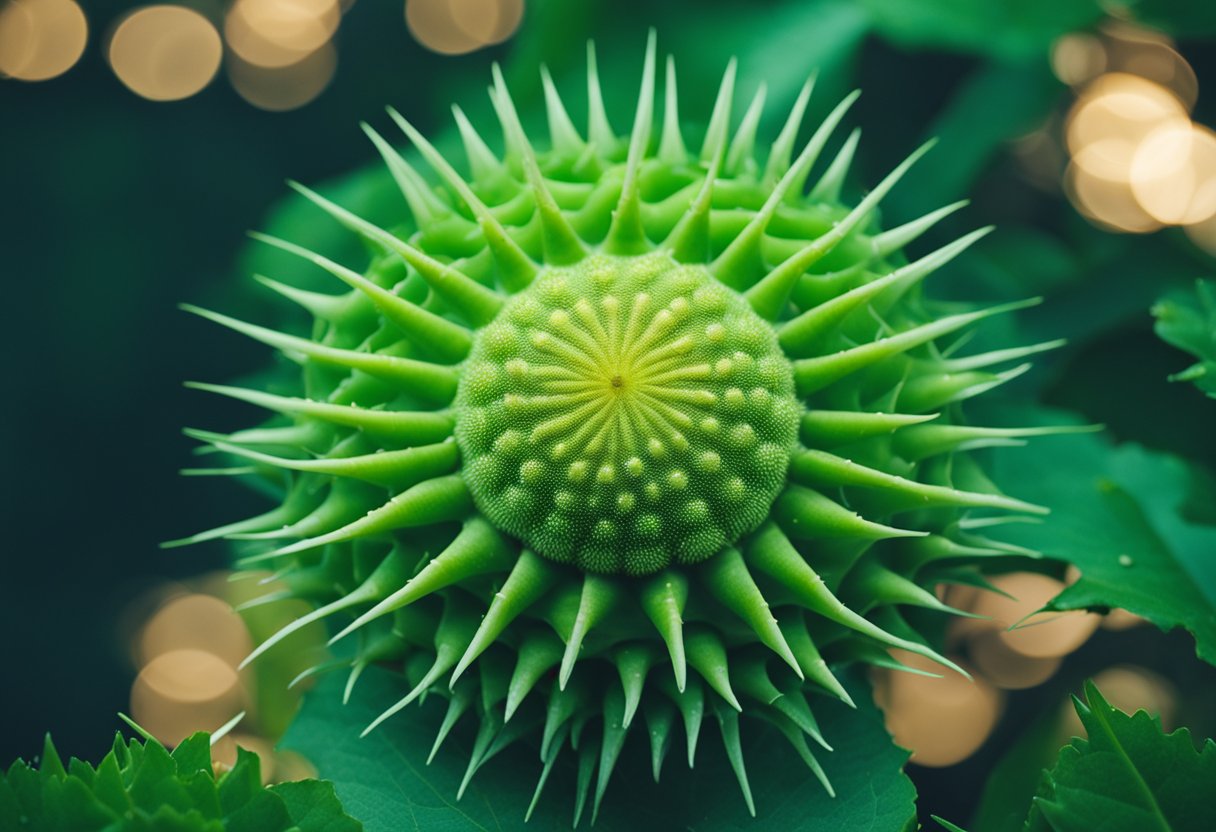
The taste of sea urchin can be described as sweet, briny, and slightly nutty. Its flavor is often compared to the taste of the ocean, with a hint of sweetness.
The texture of sea urchin is creamy and custard-like, making it a popular ingredient in dishes such as uni pasta and sushi rolls. Despite its distinct taste and texture, sea urchin is not for everyone and may take some getting used to.
Key Takeaways
- Sea urchin has a sweet, briny, and slightly nutty flavor with a hint of ocean taste.
- The texture of sea urchin is creamy and custard-like, making it a popular ingredient in dishes such as uni pasta and sushi rolls.
- Sea urchin may not be for everyone and may take some getting used to.
What is Sea Urchin
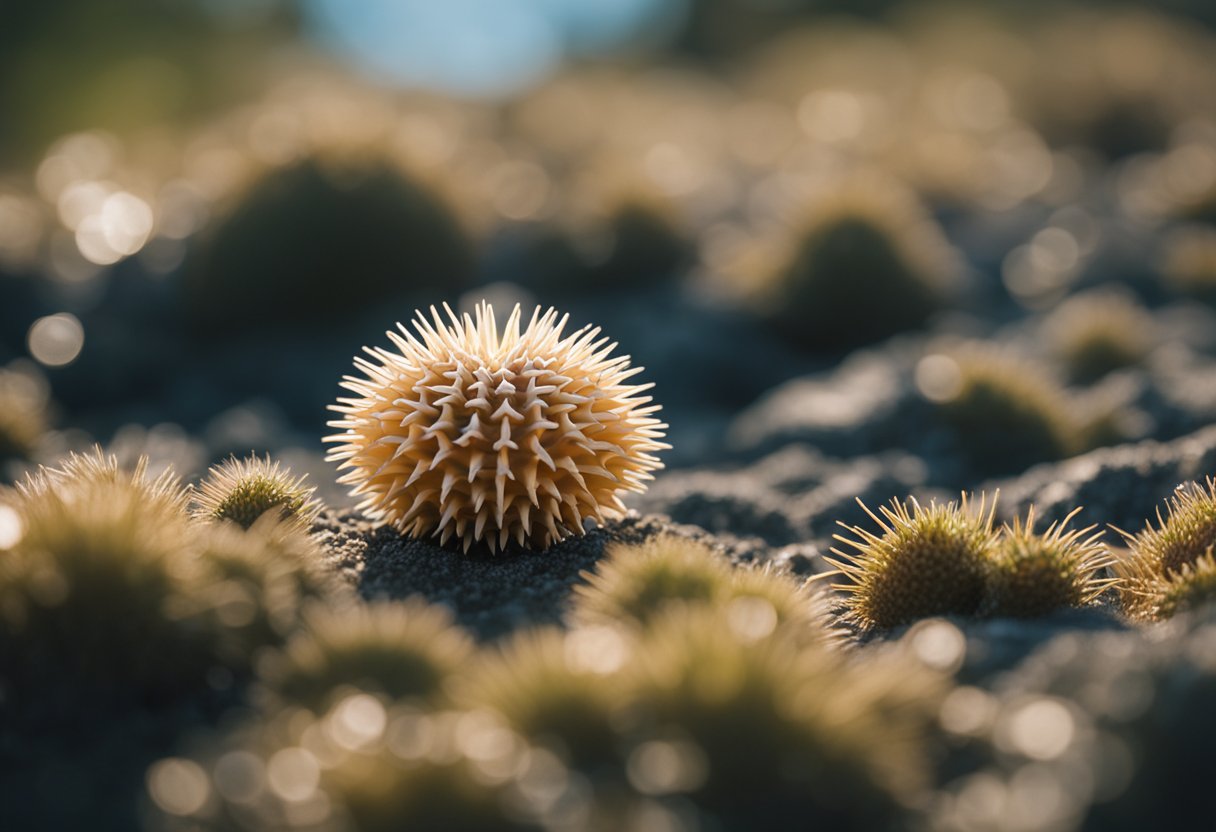
As a seafood delicacy, sea urchin is a spiny echinoderm that is popularly known as uni. The edible part of sea urchin is its gonads, which are the reproductive organs of the organism.
The red and purple sea urchin species are the most commonly consumed species in the United States and Japan, respectively.
Sea urchins are found in oceans around the world, from shallow waters to depths of up to 5,000 meters. They are commonly found in rocky areas and coral reefs. The spines of a urchin are used for protection against predators and can vary in length and thickness depending on the species.
The taste of sea urchin is unique and has been described as a combination of sweet, salty, and briny flavors with an umami undertone. The taste can vary depending on the species and the location where it was harvested. Like oysters, sea urchins tend to taste like the ocean they come from and the seaweed they feed on.
In addition to being a delicacy, sea urchins are also used in traditional medicine. The gonads of sea urchins are believed to have anti-inflammatory and antioxidant properties. However, more research is needed to confirm these claims.
Overall, sea urchin is a unique and flavorful seafood delicacy that is enjoyed by many around the world.
The Taste Profile of Sea Urchin
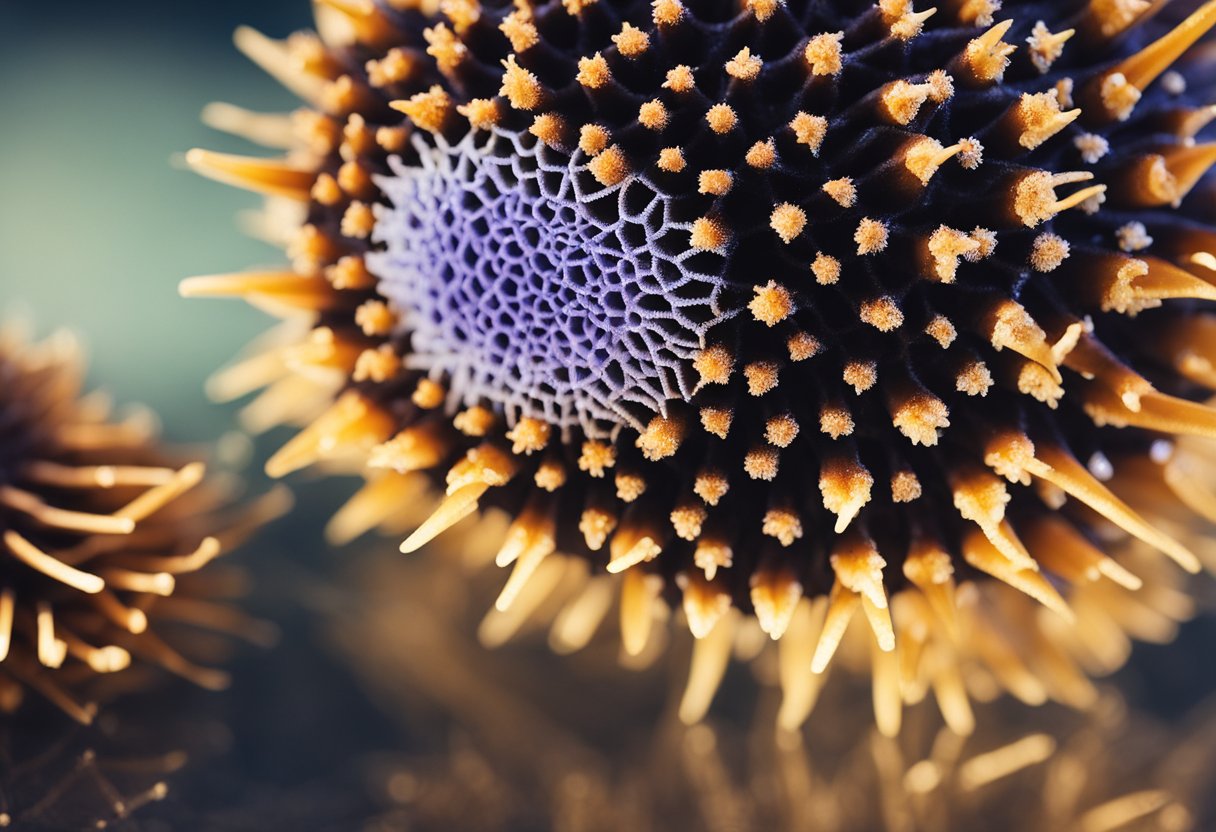
Sea urchin, also known as uni, has a unique taste that is difficult to describe. As someone who has tasted sea urchin, I can confidently say that its taste can be described as a combination of sweet, briny, and creamy.
When it comes to the flavor of sea urchin, it is important to note that it can vary depending on several factors, including the type of sea urchin, its freshness, and how it is prepared.
The taste of sea urchin can be influenced by the recipe it is prepared with, as well as the ingredients used. Adding lemon to the dish, for example, can enhance the natural taste of sea urchins.
One of the most notable flavors of sea urchin is its umami flavor. This savory taste is often described as a “sublime” flavor that is difficult to put into words. The creamy texture of sea urchin also adds to its unique taste profile.
While sea urchin has a sweet and briny taste, some sea urchins can exhibit a slight bitterness that complements their overall flavor profile. This bitterness is subtle and adds depth to the taste, creating a well-rounded and nuanced culinary sensation.
In terms of texture, sea urchin is creamy and buttery, with a slightly grainy mouthfeel. The taste can vary depending on the type of sea urchin, its freshness, and how it is prepared. Generally, fresher sea urchin will have a sweeter and more pleasant taste.
Overall, the taste of sea urchin is unique and may not be for everyone. However, for those who enjoy seafood and are willing to try new things, sea urchin can be a delicious and adventurous culinary experience.
Culinary Uses of Sea Urchin
Sea urchins, also known as uni, are highly valued in the culinary world for their exquisite flavor and delicate texture. The roe of sea urchins is the edible part, and it is often used as a garnish in sushi, sashimi, and other Japanese cuisine.
Sea urchin roe has a distinct taste that can be described as briny, sweet, and savory. Its flavor is often compared to that of oysters, with a buttery texture that melts in your mouth. The taste of sea urchin can also be influenced by factors such as its freshness, location, and preparation method.
Sea urchin is a versatile ingredient that can be used in a variety of dishes. It can be added to pasta dishes, risotto, and soup to add a unique flavor and texture. Chefs around the world have incorporated sea urchin into their culinary creations, experimenting with different flavor combinations and techniques.
In Japanese cuisine, sea urchin is often served as nigiri or sashimi, and it is also used as a filling for sushi rolls. Sea urchin can also be used as a garnish for seafood dishes, adding a pop of color and flavor to the plate.
When cooking with sea urchin, it is important to handle it with care and ensure that it is fresh. It is best to purchase sea urchin from a reputable seafood market and use it within a day or two of purchase.
Overall, sea urchin is a delicacy that is prized by chefs and food enthusiasts alike for its unique flavor and texture.
Texture and Consistency of Sea Urchin
When it comes to sea urchin, the texture and consistency of the meat are just as important as its flavor. The texture of sea urchin can be described as creamy, buttery, and even slightly slimy.
The creamy texture of sea urchin is often compared to custard or foie gras. As soon as you put it in your mouth, the uni melts and coats your tongue with its velvety texture. The buttery texture of sea urchin is also a common descriptor. It’s like a mix of custard and sublime butter in your mouth.
The consistency of sea urchin is similar to that of a soft-boiled egg yolk, but with a slight chewiness and a silky softness. The uni has a smooth and custard-like texture that melts in your mouth, offering a luxurious and velvety experience.
It’s worth noting that the texture of sea urchin can vary depending on the type of sea urchin, its freshness, and the preparation method. For example, sea urchin that has been frozen and thawed may have a slightly different texture than fresh sea urchin.
Overall, the texture and consistency of sea urchin are a big part of what makes it such a unique and sought-after delicacy. Its creamy, buttery, and slightly slimy texture is definitely an acquired taste, but for those who appreciate it, there’s nothing quite like it.
Preparation and Cooking Methods
Sea urchin is a delicacy that requires careful preparation and cooking to bring out its unique flavor. Here are some tips and methods for preparing and cooking sea urchin:
Heat
Sea urchin is a delicate seafood that should not be cooked at high temperatures. It is best to cook sea urchin at low to medium heat to preserve its texture and flavor. High heat can cause the sea urchin to become tough and rubbery.
Preparation
When preparing sea urchin, it is important to handle it with care. Sea urchin has a spiny outer shell that should be removed before cooking.
Use a pair of gloves or a towel to hold the sea urchin while removing the shell. Once the shell is removed, carefully remove the roe (the edible part of the sea urchin) with a spoon.
Olive Oil and Lemon Juice
Olive oil and lemon juice are common ingredients used in sea urchin dishes. Olive oil adds a rich, buttery flavor to the sea urchin, while lemon juice adds a tangy, citrusy flavor. When using olive oil and lemon juice, be sure to use high-quality ingredients to enhance the flavor of the sea urchin.
Preparation Method
There are many ways to prepare sea urchin, including raw, steamed, grilled, and baked. Raw sea urchin is often served as sushi or sashimi, while steamed sea urchin is often served with rice or pasta.
Grilled sea urchin can be served as a standalone dish or added to seafood stews or soups. Baked sea urchin is often served with breadcrumbs and herbs for added flavor.
Tips
Here are some tips for cooking and serving sea urchin:
- Use fresh sea urchin for the best flavor.
- Do not overcook sea urchin, as it can become tough and rubbery.
- Experiment with different flavor combinations, such as adding herbs or spices to the sea urchin.
- Serve sea urchin with high-quality ingredients, such as fresh bread or pasta.
- Pair sea urchin with a light, crisp white wine to complement its delicate flavor.
Overall, sea urchin is a unique and flavorful seafood that can be enjoyed in a variety of ways. With the right preparation and cooking methods, sea urchin can be a delicious addition to any seafood dish.
Pairing and Serving Suggestions
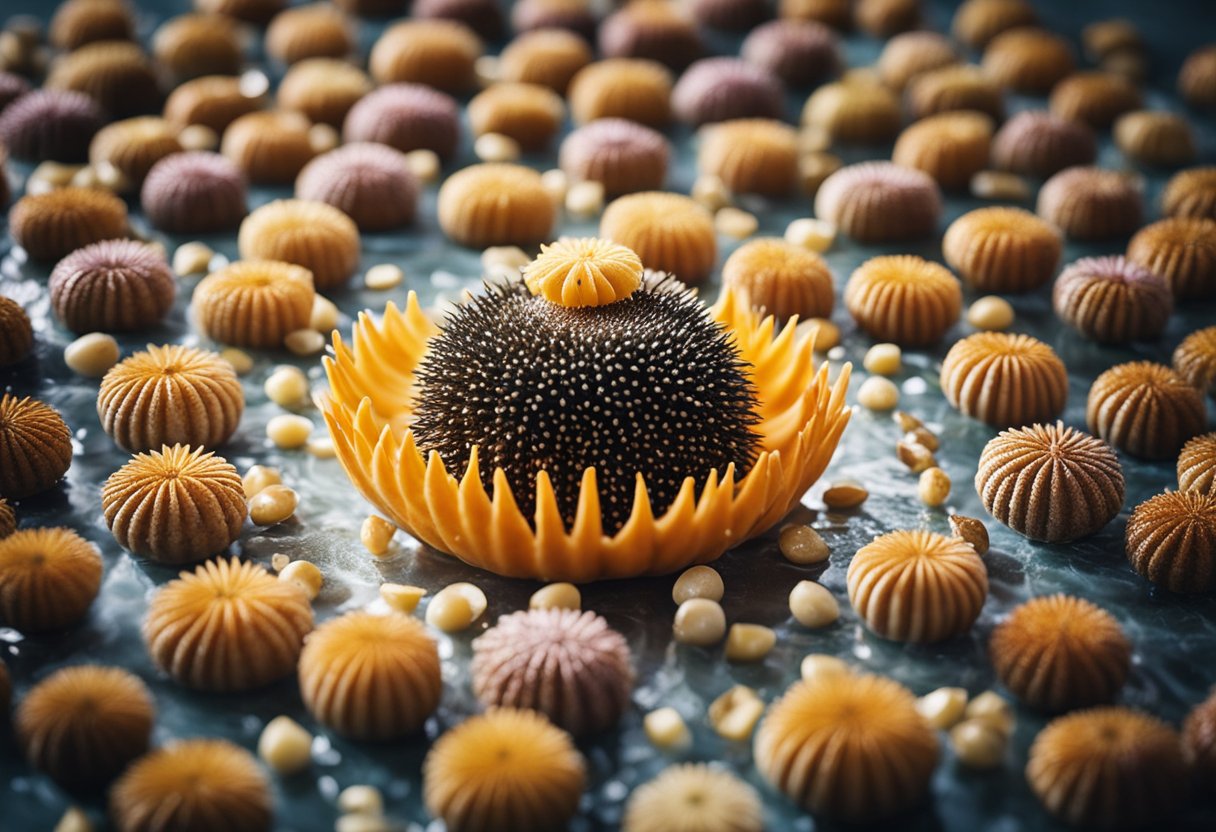
When it comes to pairing and serving sea urchin, there are a few things to keep in mind. Sea urchin has a unique taste that can be described as briny, sweet, and savory, with a buttery texture that melts in your mouth [1].
Its subtle taste reminds some of oysters with meaty notes, while others describe it as a sweetish scallop with a taste of ripe papaya [4].
Sea urchin is often served raw and fresh, either on its own or as nigiri, a type of sushi. It pairs well with white wine, particularly crisp and acidic varieties like Sauvignon Blanc or Chablis.
Citrus fruits like lemon or yuzu are also great options for pairing with sea urchin, as the acidity helps to balance out the richness of the uni [1].
Sea urchin can also be used in a variety of dishes, such as pasta or risotto, where it adds a creamy texture and briny flavor. It pairs well with salty ingredients like caviar or seaweed, as well as with garlic and pepper for a more savory flavor profile [2].
For a simple and elegant presentation, sea urchin can be served in its shell with a drizzle of lemon juice and a sprinkle of black pepper. It can also be served on toast with a dollop of ricci di mare, a sauce made from sea urchin roe, olive oil, and lemon juice [3].
When it comes to pairing sea urchin with other foods, mild seafood, fish, and summer vegetables are all great options. Fruits like mango or papaya can also complement the sweet and briny flavor of sea urchin.
Ultimately, the best way to enjoy sea urchin is simply on its own, allowing its delicate flavor to shine through [4].
Overall, sea urchin is a delicacy that can be enjoyed in a variety of ways. Its unique taste and texture make it a versatile ingredient that pairs well with a range of flavors and dishes.
Nutritional Value and Health Benefits
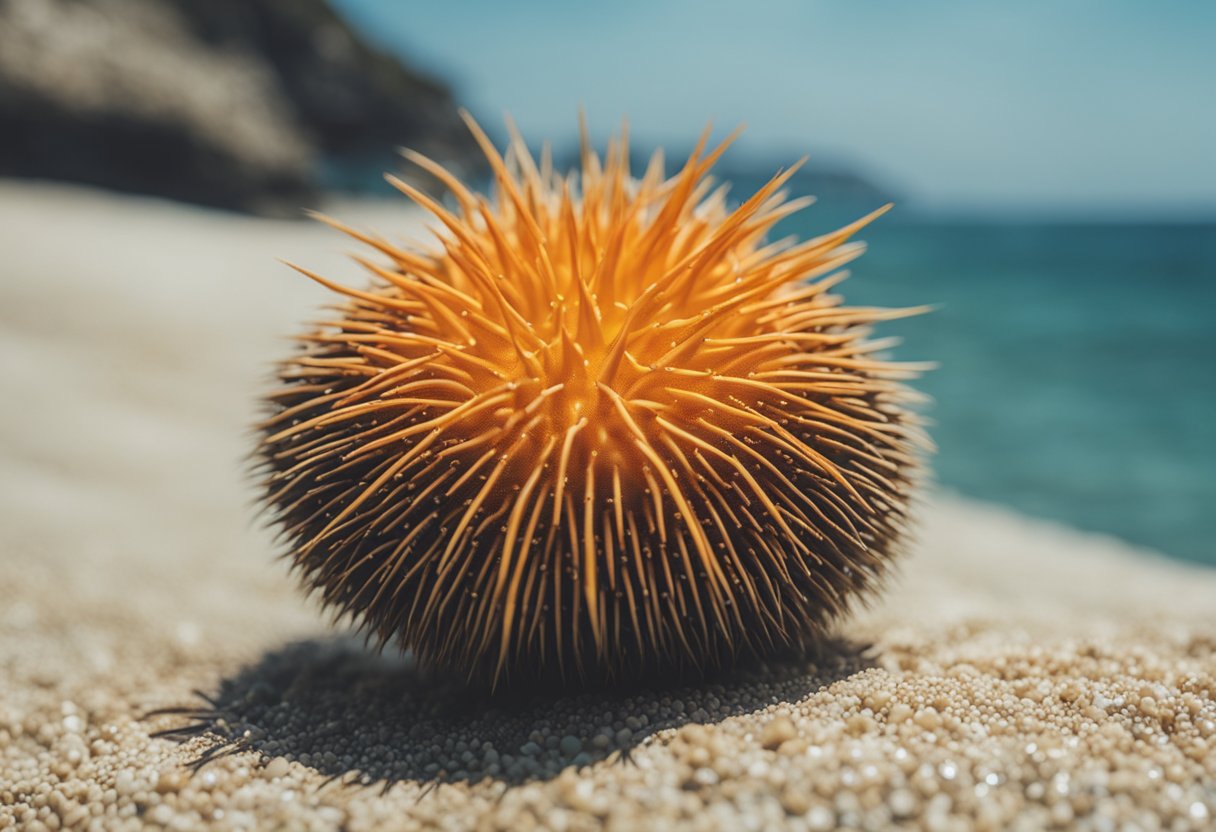
Sea urchin, also known as uni, is not only delicious but also packed with nutrients that are beneficial to our health. Here are some of the nutritional values and health benefits of sea urchin:
Protein
Sea urchin is a great source of protein. In fact, a 100-gram serving of sea urchin can provide up to 15 grams of protein. Protein is essential for building and repairing tissues in our body, and it also helps to maintain healthy skin, hair, and nails.
Iron
Iron is an important mineral that our body needs to produce red blood cells. Sea urchin is a good source of iron, with a 100-gram serving providing up to 3.5 milligrams of iron. Iron deficiency can lead to anemia, which can cause fatigue, weakness, and shortness of breath.
Aphrodisiac
Sea urchin has been considered an aphrodisiac in some cultures for centuries. While there is no scientific evidence to support this claim, some people believe that sea urchin can increase libido and enhance sexual performance.
Other Nutrients
Sea urchin is also rich in other nutrients, including:
- Omega-3 fatty acids: These healthy fats can help to reduce inflammation and lower the risk of chronic diseases such as heart disease and cancer.
- Vitamins: Sea urchin is a good source of vitamins A, B12, and D, which are essential for maintaining healthy vision, nerve function, and bone health.
- Minerals: Sea urchin is high in minerals such as calcium, magnesium, and potassium, which are important for maintaining strong bones, regulating blood pressure, and supporting muscle function.
Overall, sea urchin is a nutritious and delicious food that can provide a wide range of health benefits. Whether you enjoy it as sushi or in a pasta dish, sea urchin is a great addition to any diet.
Sea Urchin in Global Cuisine
Sea urchin, also known as Uni, is a delicacy in many parts of the world. It is a popular ingredient in Japanese cuisine, especially in sushi and sashimi. The creamy, buttery texture of uni pairs well with the subtle sweetness of rice and the umami flavor of soy sauce.
Nigiri sushi, which is a type of sushi made with a small ball of rice and a slice of fish or seafood on top, is a popular way to serve uni in Japanese cuisine.
Apart from Japanese cuisine, sea urchin is also used in Italian cuisine and is known as “ricci di mare”. It is often served with pasta or in risotto dishes, adding a briny, oceanic flavor to the dish.
In French cuisine, uni is sometimes used as a substitute for foie gras due to its rich, decadent flavor and texture.
In addition to these traditional uses, sea urchin is also finding its way into new and innovative dishes. For example, chawanmushi, a Japanese egg custard dish, can be made with uni to add a unique flavor and texture.
Uni can also be used as a topping for pizza or added to scrambled eggs for a luxurious breakfast dish.
Overall, sea urchin is a versatile ingredient that can be used in a variety of dishes, from traditional Japanese sushi to modern fusion cuisine. Its unique flavor and texture make it a popular choice among chefs and food enthusiasts alike.
Environmental Impact and Sustainability
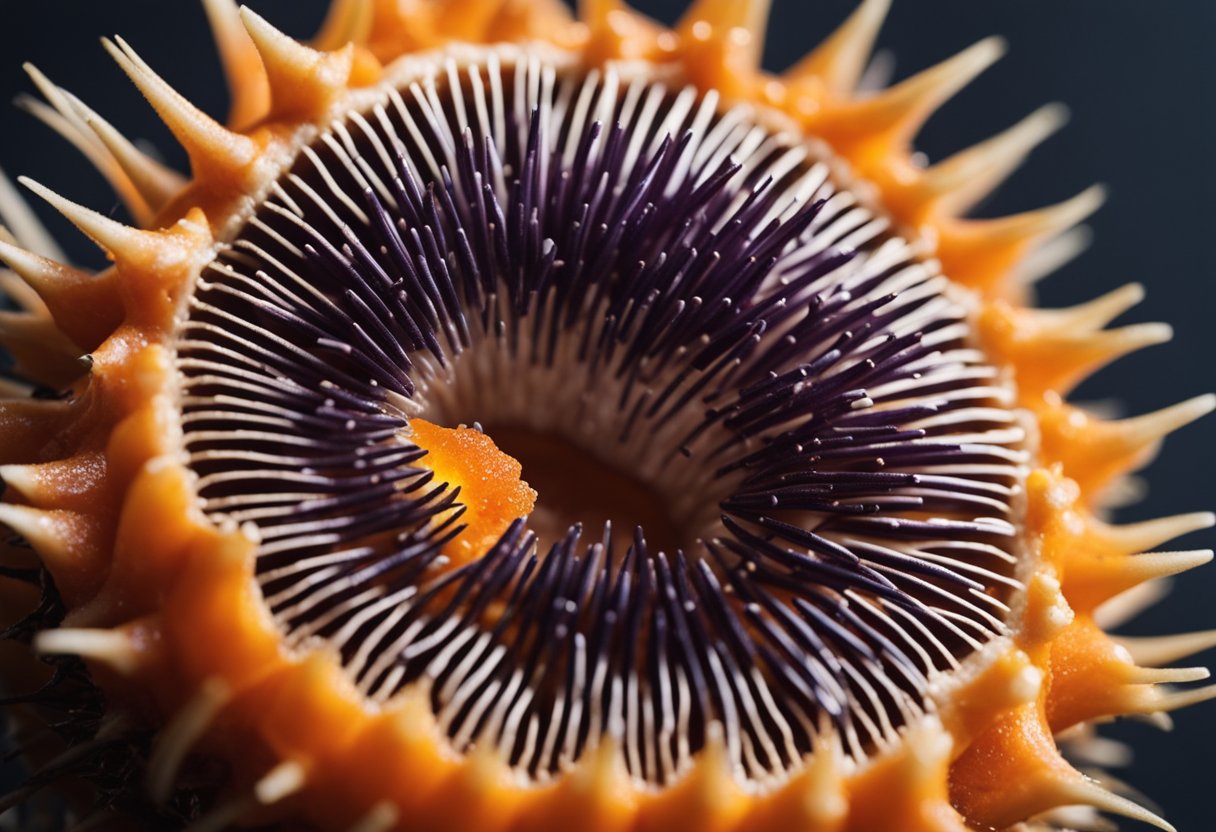
As a seafood delicacy, sea urchins have gained popularity in recent years. However, it is essential to consider their environmental impact and sustainability.
Sea urchin harvesting can have a significant impact on the ocean’s ecosystem. Overfishing can lead to a decrease in biodiversity and a loss of important species. In some areas, sea urchin populations have exploded due to a lack of natural predators, leading to the destruction of kelp forests.
To ensure sustainability, it is essential to regulate sea urchin harvesting. In California, the California Department of Fish and Wildlife regulates the sea urchin fishery. They limit the number of sea urchins that can be harvested and monitor the health of the kelp forest.
Moreover, sea urchin farming has been gaining popularity as a sustainable alternative to wild harvesting. Sea urchin farming can reduce the pressure on wild populations and provide a steady supply of high-quality sea urchins.
In terms of location, the environmental impact of sea urchin harvesting can vary. For example, harvesting in areas with high biodiversity and sensitive ecosystems can have a more significant impact than in areas with lower biodiversity.
Overall, it is crucial to consider the environmental impact and sustainability of sea urchin harvesting. By regulating the industry and promoting sustainable farming practices, we can ensure that sea urchins remain a delicacy while preserving the ocean’s ecosystem.
Buying and Storing Sea Urchin
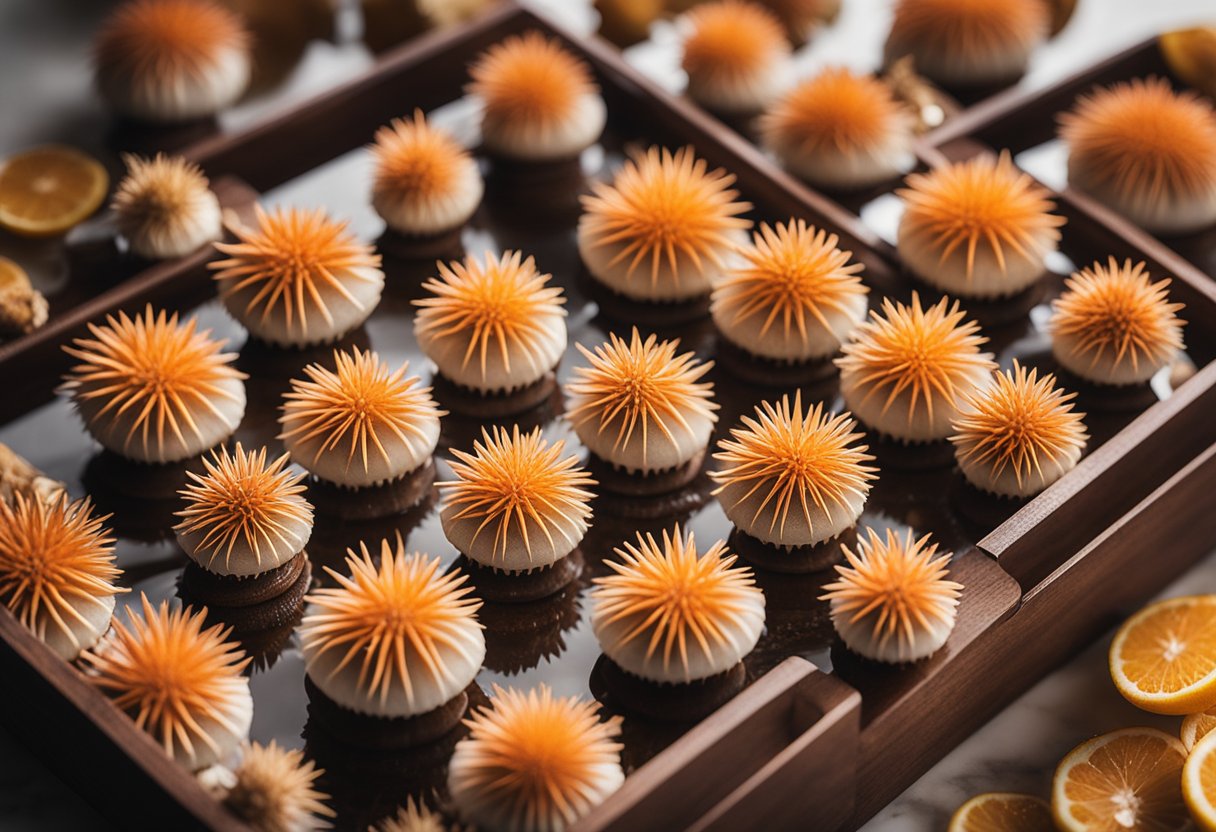
As someone who loves seafood, I always make sure to buy fresh and high-quality ingredients to get the best possible taste. The same goes for sea urchin, also known as uni. Here are some tips on buying and storing sea urchin:
Markets
Sea urchin can be found in many seafood markets, both online and offline. When buying sea urchin, it’s important to choose a reputable market that sells fresh and high-quality seafood. Look for markets that have a good reputation and have been in business for a long time.
If you’re not sure where to buy sea urchin, you can ask for recommendations from friends or family members who are seafood enthusiasts. You can also check online reviews and ratings to find the best seafood markets in your area.
Freshness
To get the best taste and texture of sea urchin, you need to eat it fresh. When buying sea urchin, look for those that have a bright, vibrant color and a firm texture. Avoid those that have a dull color, a soft texture, or a bad odor.
It’s also important to check the harvest date of the sea urchin. Sea urchin that has been caught recently will have a better taste and texture compared to those that have been sitting in storage for a long time.
Storing
If you’re not planning on eating the sea urchin immediately, it’s important to store it properly to maintain its freshness. Sea urchin should be stored in a cool and dry place, away from direct sunlight and heat.
It’s best to store sea urchin in a container filled with ice or in a refrigerator set at a temperature of 32°F to 39°F. Make sure to cover the container tightly with plastic wrap or aluminum foil to prevent air and moisture from getting in.
In conclusion, buying and storing sea urchin is crucial to get the best taste and texture. Make sure to choose a reputable seafood market, check the freshness of the sea urchin, and store it properly to maintain its quality.
Common Misconceptions about Sea Urchin Taste

As someone who has tasted sea urchin before, I have come across several misconceptions about its taste. Here are a few common ones:
- Sea urchin tastes like fish: This is a common misconception. While sea urchin is a seafood, it has a unique taste that is not similar to any other seafood. It has a distinct flavor that is sweet, slightly salty, and has a strong umami taste.
- Sea urchin has a metallic taste: Some people believe that sea urchin has a metallic taste, but this is not true. If the sea urchin is not fresh, it may have a bitter taste and an ammonia-like aroma, but it does not have a metallic taste.
- Sea urchin is a mineral-rich food: While it is true that sea urchin is a good source of minerals like calcium, magnesium, and zinc, it is not the main reason why people eat it. Sea urchin is mostly consumed for its unique taste and texture.
- Sea urchin is made up of reproductive organs: This is partially true. Sea urchin roe, also known as uni, is the edible part of the sea urchin and is made up of the reproductive organs. However, the taste of uni is not similar to the taste of any other reproductive organs.
- Sea urchin has a strong aroma: Sea urchin does have a distinct aroma, but it is not strong or overpowering. The aroma is slightly sweet and briny, and it complements the taste of the sea urchin.
- Sea urchin is similar to balut: Balut is a Filipino delicacy that is made up of fertilized duck eggs that have been boiled and eaten with the embryo inside. Sea urchin is not similar to balut in any way. They are two completely different foods with different tastes and textures.
In conclusion, sea urchin has a unique taste that is not similar to any other seafood. It has a sweet, slightly salty, and strong umami taste with a slightly sweet and briny aroma. While it is a good source of minerals, it is mostly consumed for its taste and texture.
Frequently Asked Questions
What is the flavor profile of sea urchin?
Sea urchin, also known as uni, has a subtle but distinctive flavor. The taste can vary depending on the type of sea urchin, its freshness, and how it is prepared.
Generally, fresher sea urchin will have a sweeter and more pleasant taste. Some people compare the taste of sea urchin to foie gras or balut, especially the “eggy” flavor.
Is sea urchin considered a delicacy?
Yes, sea urchin is considered a delicacy in many cuisines, particularly in Japanese cuisine, where it is widely consumed. Uni is the edible roe of sea urchins and is highly prized for its exquisite taste and texture.
What is the texture of sea urchin?
The texture of sea urchin is creamy and buttery, with a slightly grainy mouthfeel. The consistency can also vary depending on the type of sea urchin and its freshness.
What are the health benefits of eating sea urchin?
Sea urchin is a good source of protein, omega-3 fatty acids, and various vitamins and minerals. It is also low in calories and carbohydrates. Some studies suggest that sea urchin may have anti-inflammatory and anti-cancer properties, but more research is needed to confirm these potential benefits.
What are some popular dishes that feature sea urchin?
Sea urchin is a popular ingredient in sushi and sashimi dishes, particularly in Japanese cuisine. It is also used in pasta dishes and risottos. Some chefs even use sea urchin as a topping for pizza.
Are there any risks associated with consuming sea urchin?
Consuming raw or undercooked sea urchin can be risky because it may contain harmful bacteria or parasites. It is important to ensure that sea urchin is properly cleaned and prepared before consuming it. People with seafood allergies should also avoid eating sea urchin.


